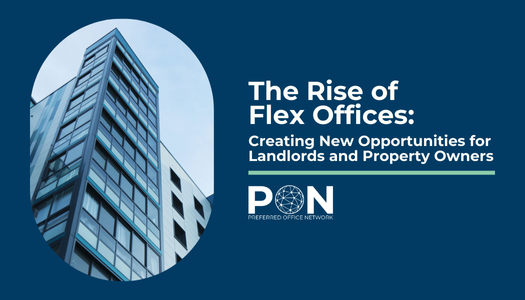
As the coronavirus pandemic continues to impact business operations around the world, it’s become increasingly likely that these new conditions will remain as a mainstay for the foreseeable future.
As a result, large, bustling cities – that have been a desirable destination for companies to relocate to for years – are seeing many companies begin to look for new, more spacious, cost-efficient alternatives.
This re-evaluation of one’s real estate footprint, which has been validated by the effectiveness of a remote / hybrid work schedule, has spurred many companies to amply consider downsizing on infrastructure needs.
But with downsizing and moving office locations comes stress, looming questions of financial implications, and a difficult logistical mess.
Have no fear though, we’re here to guide you on the steps needed to make a smooth transition to your new workspace of the future.
Things to consider before selecting where you’ll move to:
Is this a complete office relocation or more of an office expansion? Given today’s demand for physical offices to meet sufficient physical distancing standards, if you’re making a complete office move, does this new space accommodate these standards? If you’re simply expanding, is the new space sufficient in size for you or for your employees?
Based on the above, what are your size requirements? After answering the above, what type and size of space are you looking for? Whether it be a private office, a smaller team room, a multi-office suite, a spec suite, or the entire floor of a building, there are various types of office sizes that follow different specifications.
Is this new workspace in an ideal location? Proximity is everything. When selecting a new workspace, consider what’s within walking distance of your new office. Your employees will appreciate you selecting a location that has a wide selection of food options – everyone loves a lunch break.
Is this new workspace located within a large or growing market? The potential to grow is another important factor to consider. If your new, desired workspace is within a growing market, this could be a great opportunity to expand your company. If you’re aiming to relocate to a larger, more established market, consider that this may be slightly harder to break into and gain a substantial market share.
What type of commute will employees have to make? Similar to working at a centralized location, consider how you and your employees will get to the office. Given that many people are avoiding public transportation for their own safety, is there ample parking available? Is it within biking distance of popular suburbs? Be sure to prioritize the safety of your team.
You’re six months out from your move, you should:
Review your existing lease. Sometimes unexpected office moves require leaving before your lease has finished. Be sure that you aren’t required to make an expensive payment for breaking your lease early. You should also check to see if you’re responsible for property damage fees – this could have happened during your lease or even something that could happen during the move.
Coordinate with multiple moving companies to find the best price coupled with the most reliable service. Some moving companies may not operate within your area so be sure to square that away.
Ask yourself if you need moving coverage for expensive equipment or machinery that your business operations totally rely on and can’t function without.
Set a moving budget. Moving can be expensive so before you start to plan out all the minute details, be sure that your proposed move is within your budget. This will help provide a ballpark for any services needed down the line.
Coordinate with an internal move strategy team. With preventing the spread of the novel coronavirus in mind, it’s imperative that you work with an internal move strategy team to protect the safety of you, your team members, and the moving team.
You’re now three to four months out from your move, you should:
Determine your office moving date. Set a date in stone as soon as you can. This way everything you plan moving forward can be centered around a fixed date – not a tentative date.
Notify your landlord that you’ll be moving. As you’ve already reviewed your existing lease and have decided to go forward with your move, contact your landlord and open a clear channel of communication that can be utilized in the coming months.
Create a moving plan. With restrictions constantly being changed in today’s shared space environment, this plan can always be altered but it is important to draft a structure of how the move will go to provide those involved with clarity.
Consider which furniture is coming with you during the move – secure your valuable, bulky items in advance. Coordinate with your moving team to communicate which items will need to be specifically taken care of during the move.
Consider new equipment that will need to be shipped to your new office location. Is something too bulky to move? Has it declined in quality during your current lease? It could be time to make a fresh change as you move offices.
Consider working with an interior designer. Large spaces require an extensive lift when it comes to decorating and creating an ergonomic workspace for you or for your team. Interior designers can evaluate your space and work with you to craft your future dream workspace.
You’re now two months out from your move, you should:
Have a floor plan laid out. If you’re working with an interior designer, this should be coordinated directly. If you’re on your own, have a plan of where everything is going to be placed, two months before moving day. You never know what could change.
Coordinate all IT needs. You want to get working on day one, so you’ll need phone, cable, internet, and all other technological requirements to be squared away months in advance.
Coordinate with your internet team to get keys and parking passes for easy business access. Once again, it’s better to get working on day one than having to hold out and even wait for access to your office. This is imperative. No access to your office equals no move which could be costly to your business operations.
Prepare for cancellation of services if no longer needed. If you are downsizing, you should prepare for the possibility of cutting certain services. If you are moving to a completely new area, your previous internet provider may not even service that area. Be sure that on day one of your move, you aren’t paying for services you no longer require.
Purchase new furniture or equipment (if necessary). If you’re moving into a more expansive space, there’s a good chance that you’ll need additional furniture.
Set up a storage facility (if necessary). If you do purchase new furniture, instead of having it take up even more space around your current office space, find a storage facility that can house any new items for the time being.
You’re just one month out from your move, you should:
Perform an inventory of furniture, equipment, and supplies. This will identify anything that is missing or that may potentially go missing from now until moving day.
Ensure that boxes and any needed moving supplies are on hand. With just a month left, you don’t want to be scrambling around last-minute purchasing boxes, packing tape, and other supplies.
Transfer utilities. It’s important that your new workspace is prepared for you and your team. Check up on the utilities that are being offered by your new building manager and make sure that they are ready to be activated on day one. Also, set the termination date for the utilities of your current workspace as your moving day.
Create a change of address list. A move means that your business will have a new address. Be sure that business collateral is all ready to be sent to your new location from the day you arrive. Clients will also want to know your next location so that they aren’t left in the dark.
Consider having the office cleaned after your move. Especially in today’s climate, it’s important to clean up after yourself so that your previous space is safe for its next occupant.
Just two weeks until your move, it’s time to:
Finalize plans with moving team. With just two weeks to moving day, connect and finalize all details with the moving team you have chosen. Make sure that there won’t be any unanswered questions come moving day.
Order keys, access cards, & parking passes. Follow through with the plans you made when you were two months out. There’s just two weeks until moving day, make sure you and your team have everything you need to commute to and access the workspace.
Confirm IT & technology set up. Another follow up from two months out. Make sure that all IT requirements that you had planned for have been squared away and are ready for service on day one.
Throw out or remove items that you won’t be taking with you. Clear any unneeded clutter from your current workspace so that nothing is blocking the way on moving day.
Back up documents to the cloud. With the potential changing of the guard in any technology services, be sure to back up any important documents to a cloud web service. Not comfortable using a cloud? Load up your documents onto a portable, external hard drive or even onto USB flash drives for safe keeping.
Only a week left, you should:
Scope out new office. Within best safety standards, it’s worth taking the time to go and walk through your new workspace. Make note of any potential property damage that may have been missed during previous walkthroughs.
Review your moving day schedule. Run through this with your team or whoever may be helping you move – apart from the moving team – to be sure that everything runs smoothly and according to plan.
Remind employees to start packing up their stuff. If you work within an office suite or a team space, be sure to remind team members that moving day is in just a week and that everything will need to be cleared out.
It’s moving day, get ready to:
Set up the office based on the selected layout. With your previously generated floor plan and office layout, work with your moving team to make your workspace yours.
Provide team members with keys and parking passes. It may be useful to have team members do a dry run of their workspace commute so that they are comfortable with how they’re getting to a physical office.
Turn on any internet, phone, or technology services. It’s time to fire up that brand-new internet you installed. Let’s get down to business.
Final walk-through of the previous office to check for damages or any issues. Although you may have scoped your new office out in previous weeks, do a final walkthrough to check for any potential damages or issues that may inhibit or harm you and your team moving forward.
You’re all set to get down to business!
Enjoy your new workspace. Whether it be a move caused by a downsize, by a re-evaluation of one’s real estate footprint, or moving to a more expansive space to reduce density among employees, it’s important that a move goes smoothly and according to plan.



